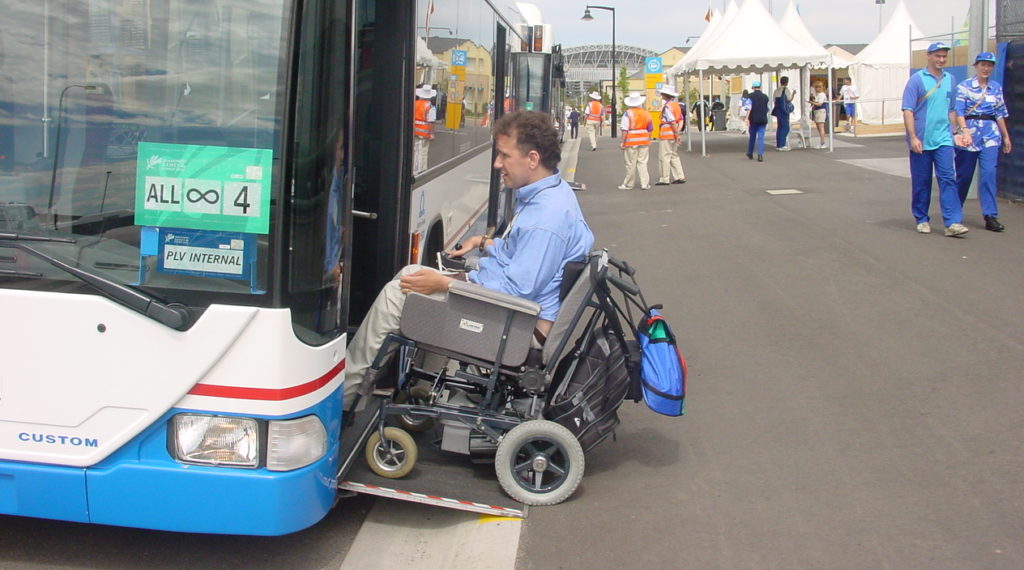
Photo: Equip for Equality
Sept. 29. By Dave Yochum. As Baby Boomers age, there is growing awareness of people with disabilities, especially in terms of public transportation, healthcare, entertainment options—even digital accessibility.
In 2020, those with disabilities must consider how well local government is handling the pandemic. Transportation is another serious challenge.
“In urban areas, even if the public buses have ramps or lifts, many drivers are not trained to accommodate individuals with different disabilities. Disability-specific travel services can be expensive and inconvenient,” says Carolyn Shivers, assistant professor of human development and family science at Virginia Tech.

SHIVERS
Things to consider
Like many disability issues, this will take large-scale infrastructure overhaul.
“Making public transportation accessible will take not only a huge financial commitment but an attitude change so that the bare minimum is not seen as enough,” Shivers said, outlining decisions points for those with disabilities:
—Layout: Are sidewalks wide enough? Are there sufficient curb cuts? Ramps into buildings? Visual and aural notifications?
—Jobs: Are local businesses and organizations supportive of hiring individuals with disabilities?
—Professionals: Are there sufficient health and education professionals and specialists to support the wellbeing of disabled individuals?
—Community: Are there other disabled people? This helps not only with community and understanding but with prompting the city to become more accessible.
Charlotte: There is work to do
Charlotte just scored scored in the bottom 15 percent—or 156th place—out of 182 US cities in terms of disability friendliness in a WalletHub study that looked at 34 key metrics around what makes a city livable or not for those with disabilities. Scottsdale, AZ was the most disability-friendly city in the US, according to WalletHub.
Key metrics
The metrics included: Cost of Living; Median Earnings for People with Disabilities; Annual Cost of In-Home Services; Share of People with Disabilities; Number of Special-Education Teachers; Graduation Rate for Students with Disabilities; Wheelchair-Access; and Family Medicine per Capita.
Charlotte and environs came in at No. 178 in Family Medicine per Capita. Durham came in at No. 177 according to this metric. Jacksonville, Fla; Omaha and Augusta tied for first place in this metric.
Increases in telehealth, better training of testers, and involvement of individuals with disabilities and their families can facilitate better access to health care, testing sites, and critical information when it comes to COVID-19 and people with disabilities, Shiver said.
COVID and children with disabilities
School districts across the country that are putting temporary structures on their school campuses and finding bigger spaces to convene to help with social distancing of students can’t forget about the mandates of the ADA.
“Accessibility means more than just a physical structure,” said Rachel M. Weisberg, a staff attorney at Equip for Equality, a nonprofit disability advocacy group. “Even if something isn’t the wall or the doorframe, but it’s a plexiglass or temporary shelving built in to keep folks away from each other, make sure it’s accessible for students and staff.”
Best advice
By providing more than the bare minimum of accessibility without being asked and providing it ahead of time, businesses, events, and organizations signal that people with disabilities are welcome and valued, Shiver said.
Disability factoids
—One in four U.S. adults, or 61 million total, have a disability that impacts their major activities.
—Among Americans age 65 and older, that number rises to two in five.
—The average monthly Social Security disability benefit as of August 2020 was $1,126.02.



